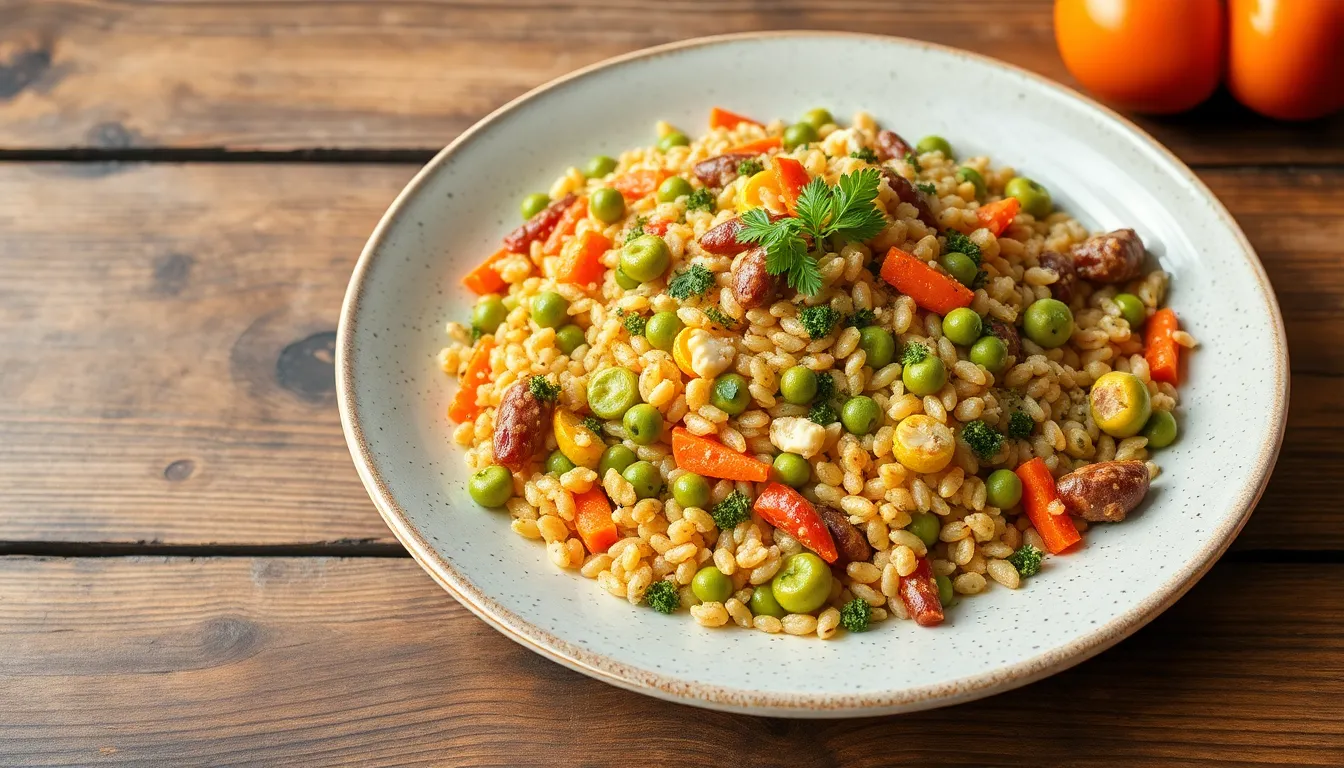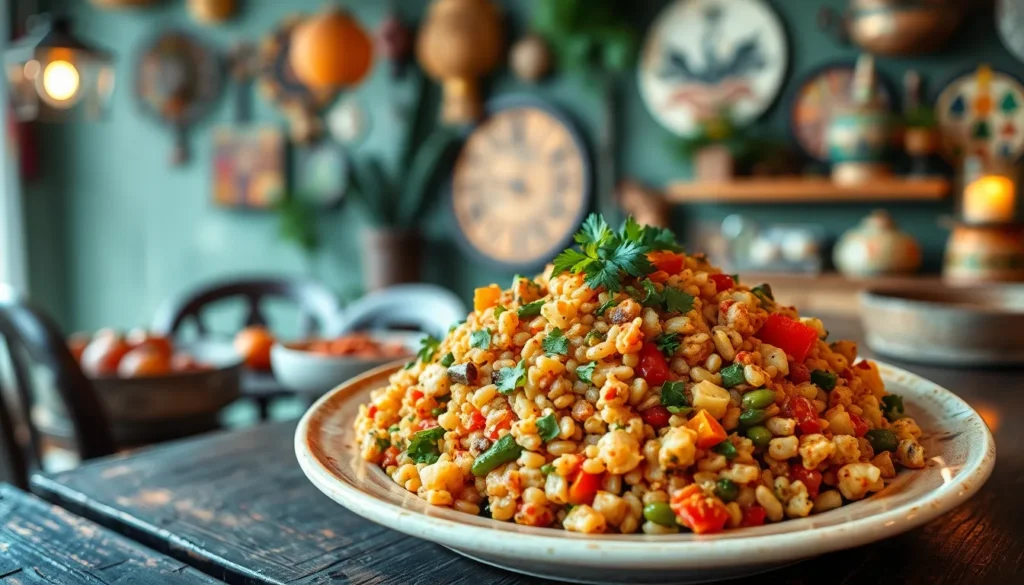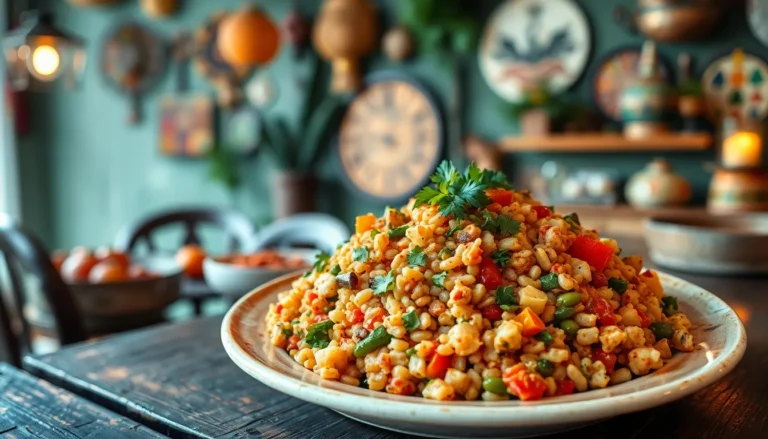Table of Contents
ToggleWhen it comes to food, everyone has their quirks and questions. One such mystery swirling in the culinary cosmos is felmusgano. What in the world is it? And more importantly, does it contain milk? If you’ve ever found yourself staring at a menu or a recipe, scratching your head, you’re not alone.
Overview Of Felmusgano
Felmusgano represents a unique food item found in various cuisines. It often piques interest due to its intriguing flavor profile and texture. People frequently wonder about its ingredients, particularly whether it contains milk.
This food item may include a range of components, depending on preparation methods and regional variations. Commonly, natural ingredients like fruits, spices, or herbal elements are combined to create a distinct taste. Some variations utilize dairy products, while others remain dairy-free.
Consumers interested in felmusgano should always check ingredient labels or ask for specifics when dining out. Clarifying the use of milk in preparation ensures a safe choice for those with dietary restrictions or allergies. Many recipes highlight alternatives for traditional ingredients, showcasing versatility.
Understanding local traditions can be beneficial. Different cultures may have their own twists on felmusgano, influencing whether milk appears in the recipe. For example, some versions may incorporate yogurt to achieve creaminess, while others might utilize coconut milk as a substitute.
Fortifying knowledge about felmusgano’s composition enhances appreciation for its diversity. Exploring variations can lead to discovering delightful flavors tailored to individual preferences. Exploring multicultural dishes leads to an expanded culinary experience.
Knowing more about felmusgano equips food enthusiasts with the insights needed to make informed choices while enjoying this intriguing dish. When curious about its contents, prioritizing ingredient awareness remains essential for an enjoyable dining experience.
Ingredients Of Felmusgano


Felmusgano features a variety of ingredients that create its distinct flavor and texture. Familiarity with these components can aid in determining whether this dish contains milk.
Common Ingredients
Typically, felmusgano includes staples like grains, legumes, and vegetables. Common additions are spices that enhance the overall taste profile. Some versions incorporate herbs for a fresh twist. The base often involves rice or pulses, while common vegetables include peas or carrots. Certain recipes might add nuts or seeds for extra crunch. Each ingredient contributes significantly to the dish’s appeal, highlighting diverse culinary traditions.
Variations In Recipes
Variations in felmusgano recipes lead to different ingredient selections. Some regional preparations incorporate dairy products such as milk or yogurt. Others opt for plant-based alternatives like coconut milk or almond milk. Adjustments frequently reflect local customs or dietary preferences. Cultural influences dictate the choice of additional ingredients, promoting creativity in cooking. With such diversity, it’s essential to check specific recipe ingredients to avoid allergens or unwanted components.
Understanding Milk Content
Felmusgano’s milk content varies depending on its preparation and cultural context. Some recipes include traditional dairy products, while others do not.
Types Of Milk Used In Products
Dairy ingredients often play a role in felmusgano variations. Common types include whole milk, cream, and yogurt. Whole milk adds creaminess, enhancing flavor and texture. Cream contributes richness, while yogurt can introduce tanginess. Versions made in Mediterranean regions might utilize sheep or goat milk, as these dairy products are culturally significant. In contrast, some recipes feature alternatives like almond milk or oat milk, appealing to those seeking non-dairy options. Understanding these variations helps consumers appreciate felmusgano’s diverse interpretations.
Lactose-Free Alternatives
Lactose-free options cater to individuals with lactose intolerance. Many recipes replace conventional milk with lactose-free varieties. Almond milk and soy milk emerge as popular choices, delivering similar textures without the lactose. Coconut milk also offers a rich, creamy alternative suitable for various dishes. Many manufacturers produce lactose-free yogurt, which enhances the culinary experience without allergy concerns. Consumers should always check labels for specific lactose-free products when enjoying felmusgano.
Consumer Concerns
Understanding the presence of milk in felmusgano is crucial for many consumers. Allergies and dietary restrictions often drive inquiries about ingredients.
Allergies And Intolerances
Milk allergies affect a significant number of people. Symptoms can range from mild to severe, necessitating careful ingredient review. Individuals with lactose intolerance face discomfort from standard dairy. Options like lactose-free yogurt or almond milk offer flourishes of flavor without the adverse effects. Consumers should always verify ingredient labels when purchasing packaged felmusgano. Awareness of local variations is essential, as some recipes may incorporate dairy products. Eating out also presents challenges; asking restaurant staff about recipes ensures informed choices.
Nutritional Considerations
Nutrition plays a key role in dietary choices related to felmusgano. Dairy ingredients can elevate calorie counts significantly, impacting those monitoring intake. Whole milk and cream introduce additional fats, while alternative ingredients often provide lighter choices. Plant-based options can deliver essential nutrients without lactose. Many people appreciate that dairy alternatives often enrich felmusgano with vitamins and minerals. Consumers seeking healthier variations should explore recipes utilizing vegetables and legumes. Each choice shapes not just flavor but also overall nutritional value.
Understanding the milk content in felmusgano is essential for those with dietary restrictions or allergies. The variations in preparation and cultural influences mean that consumers must remain vigilant about ingredient choices. Whether enjoying a traditional version with dairy or opting for a plant-based alternative, knowledge is key.
By being aware of what’s in felmusgano, individuals can make informed decisions that align with their dietary needs. This not only enhances their culinary experiences but also promotes a greater appreciation for the diverse interpretations of this intriguing dish.




